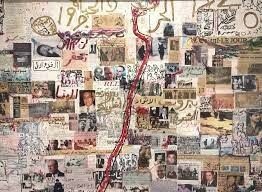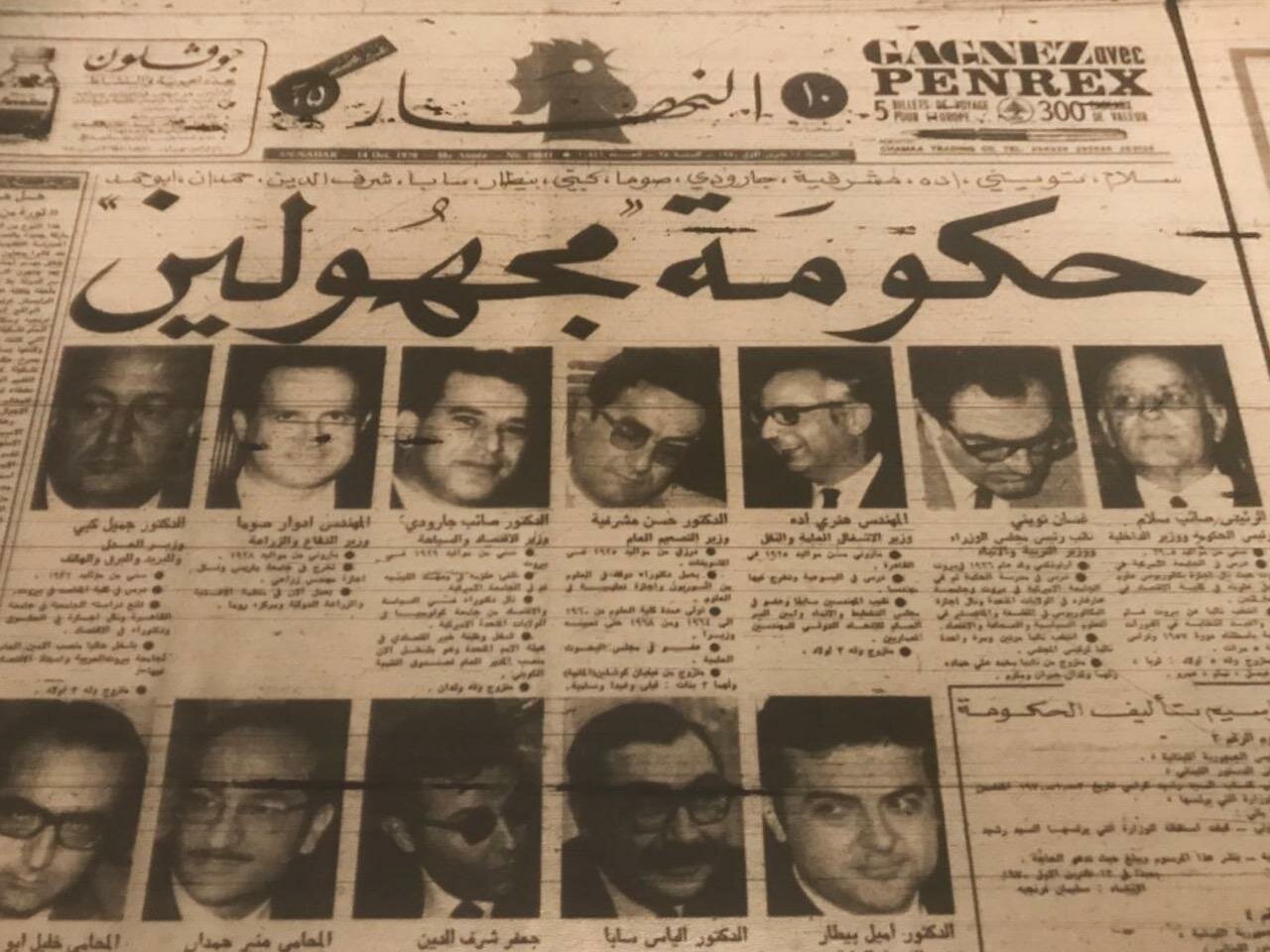American communication professor, George Gerbner, once wrote that This could not be more true with Lebanese media, which functions within the constraints and context of the complex socio-political system in place. For every news piece about the recent happenings in Lebanon, a myriad of explanations arises, with different platforms interpreting these events differently. People are left to search for objectivity and truth, and before being able to comprehend what’s happening around us, a new piece of news emerges. The lack of objectivity and fairness in the Lebanese media serves the interests of media owners. But why are the media owners’ interests prioritized over fairness and objectivity? To answer this question, we need to look at several key factors: institutionalized sectarianism, social inequality, the za’im system, foreign patronization, and a 15-year civil war. Additionally, we need to go back and review the media’s response to the most defining moments in Lebanese history.
Before analyzing Lebanese media, it is important to look at how scholars choose to define objectivity. Objectivity by definition is, “lack of favoritism toward one side or another.” However, in journalism, objectivity is hard to define, let alone apply. Fairness and balance, along with other factors like detachment, nonpartisanship, accuracy, and truthfulness constitute the main tenets of objectivity. Fairness involves the inclusion of all sides in conflict stories, even if one of these sides is not the one media owners are in support of, while balance refers to shedding light on the different sides of a dispute an equal amount of times. However, many scholars question the ethics behind including ‘the other side’ in some conflicts, and due to the limited time frame given to many journalists, they tend to exclude some sides of a story. Thus choosing which side to include reveals journalists’ biases. This deems the concept of complete objectivity a myth. However, a series of press codes and journalistic ethics are followed by countries to ensure that news reporters are as unbiased as possible while reporting issues and events. Yet, the Lebanese press code is still a special case as it stands with high partisanship and lack of balance.
Since the 1920s, different influential figures have chosen to explain the emergence of the country in a narrative that would benefit their nationalist aspirations. This mobilized people from different sects, through a mixture of propaganda and clientelism, to support the leaders that most reflected their nationalistic views. Lebanese nationalists explain the establishment of a Lebanese state through a historical narrative with the ultimate goal being independence. Nevertheless, Arab nationalists choose to explain it as part of a French scheme to divide Arab nations. This variation of historical narratives presented to Lebanese people has sparked a domino effect on the media, which has adopted these narratives and has let them jeopardize the neutrality of their reporting.
The end of the Arab Cold War brought upon many changes to the Lebanese press, and members of authority, such as different political party leaders or those hired by these leaders were confiscating the majority of papers with content relating to Israel, particularly papers that reflected left-leaning views. In 1967, amidst the Palestinian Naksa , there were different ideologies and perspectives on the ground, especially those marked by a leftist tone, such as Communism and Arab socialist nationalism, which were on the rise. Intellectuals of the Lebanese society were pushing for their narrative, whether it be by hosting exhibitions or publishing controversial books. However, most of their work would be confiscated by members of the authority. An example of that was the Muslim Brotherhood consifcating Syrian philosopher Sadiq Ialal al-‘Azm’s book critiquing religious thought, which was published in Beirut, because it threatened the success of their campaign and critiqued their ideology. By the end of the Arab Cold War, newspapers that were funded by other Arab countries started emerging. Among these newspapers were pro-Iraqi Al- Muharrir and Al-Bayrut. Most newspapers at the time were influenced by Ba’athist officials and took a visible left stance as communism was on the rise. As a result, This influenced the public opinion and a marxist analysis of the current events taking place in Lebanon and neighboring countries continued to spread to a large audience, particularly the youth,
Lebanon today is divided among several parties, the majority of Lebanese media and papers on the ground reflect the opinions of these parties and their supporters. Social contracts bind the Lebanese audience to the media, with Lebanese people being aware of the political affiliation of the various media outlets. Hence, the Lebanese audience approaches news organizations as indicators of political opinion rather than sources of news.
Furthermore, there is a social understanding between a newspaper’s editors and a specific Lebanese party or politician. In the late 60s, the independent Al- Nahar’s headquarters were known as the capital for Arab politics in Beirut as Ba’athis, followed by Palestinian leaders, would often visit columnist and editor Michel Abou Jawdeh’s office. As is known, journalists need to follow guidelines given by editors, and as a result, journalists are bound by an implicit contract denying them the right to criticize the party they represent. This explains why throughout the years, Lebanese media, particularly newspapers, has constantly been marked by a tone favoring a certain ideology or politician. Today, the majority of TV news channels and papers are affiliated with certain sects.
Today, the majority of Lebanese TV stations and papers are categorized by sectarian affiliation, which is mainly divided into the March 8th and March 14th alliances. The March 8th alliance category includes Al- Manar, NBN, Orange TV, while the March 14 alliance includes Future tv, and Murr TV (MTV). Most of the articles or news episodes published and broadcast by these papers and TV channels are more of statements defending their sects rather than pieces of news. To illustrate, on Oct. 14, 2021, violent clashes in Tayouneh left seven people dead, and 32 injured. These violent clashes erupted unpredictably, leaving so many people baffled and terrified, searching for news headlines that would help them wrap their heads around what was happening. News started spreading around quickly between Whatsapp groups inducing panic between individuals and calling for students to immediately return home. The next day, Al Manar released an article that stated, “Lebanese Forces militia staged a deadly ambush in Tayouneh as they opened fire at peaceful demonstrators who were protesting the politicization of Beirut Port blast near Justice Palace.” The nature of how “peaceful” these protestors were is unknown. In fact, few people know what actually happened that day. In response, MTV released a separate article to defend the “accusations” the very next day. Additionally they waited for the investigations to unleash a series of articles attacking Hezbollah and Amal Movement, blaming them for the attacks. Rarely any reporting was done by MTV, but rather a series of articles written to point fingers. The lack of representation in most Lebanese media clearly suggests a lack of fairness. David Mindich, an American professor, usually compares fairness and objectivity to a seesaw. “The idea here is that journalists can find truth by offering two competing truth claims.” However when it comes to Lebanese media, people are left to weigh out the truth claims offered by journalists through reading between the lines.
Lebanese media continues to spread confusion among individuals every day due to its lack of objectivity and fairness. To reiterate, Lebanese citizens look at news sources as indicators of political opinions rather than sources of information. Many foreigners, including international students, constantly complain about having hardships finding a trusted news source and staying up to date. This is because they may not be familiar with all the complex ‘social contracts’ that bind journalists to editors, and editors to politicians or funding sect members. The October 17 revolution birthed many secular publications aiming for change, and striving to reveal the truth. A lot of these publications are student-led publications which encourage young journalists to share their thoughts and redefine journalism in Lebanon. Most of these online publications ask for interested readers willing to support their cause so that they can continue to write non-politically affiliated news articles to change the media culture in Lebanon.





